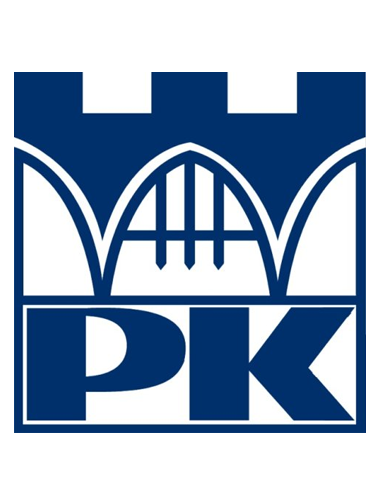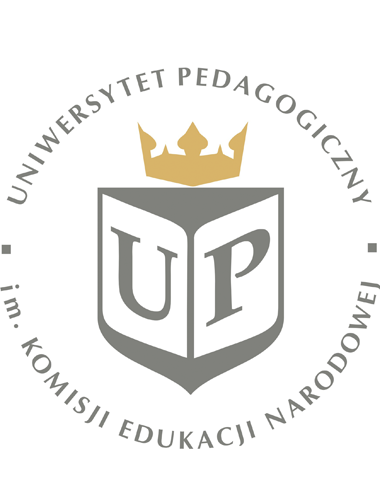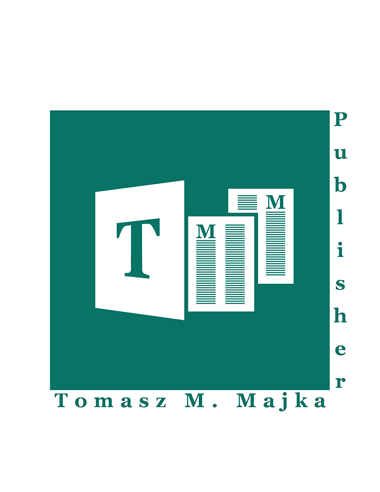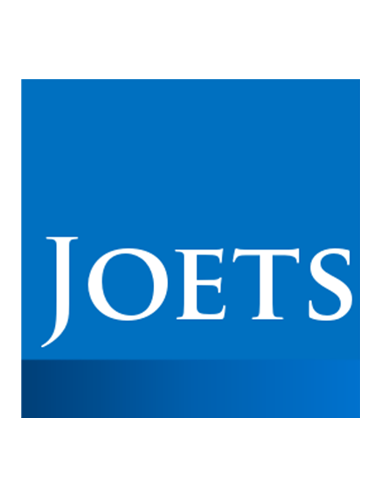
Events and Venues
Inauguration: Collegium Witkowski
The
opening session will take place in Collegium Witkowski of the
Jagiellonian University, 13 Gołębia Street (Dove Street). The
building was erected in years 1908 – 11. The initiator of the
construction, August Witkowski, was professor of physics and Rector
Magnificus of the University.
The building
housed the Physics Department till 1964, the 600-th anniversary of
the University. Marian Smoluchowski (born on 28 May 1872 in
Vorder-Brühl near Vienna, – died on 5 September 1917 in Kraków),
was the successor of August Witkowski, moved to Kraków from Lwów
(Ukr. Lviv) to take over the chair in the Experimental Physics
Department in 1913. When World War I began, the work conditions
became difficult, since the building was converted into a military
hospital.
The opening lecture is to be given by
Prof. Józef Spałek from the Institute of Physics of Jagiellonian
University. He is a physicist and renowned university lecturer. He
received the Prize of the Foundation for Polish Science in 2016,
in the mathematical, physical, and engineering sciences for his
research on strongly correlated electron systems and in
particular, for the derivation of the so-called t-J model.
The opening ceremony will be accompanied by a concert of
the choir Cantata of Cracow University of Technology, conducted by
Marta Stós.
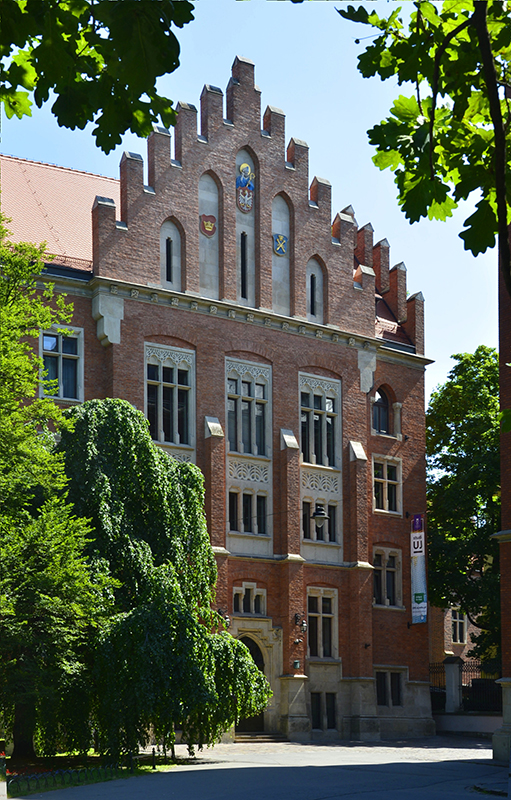
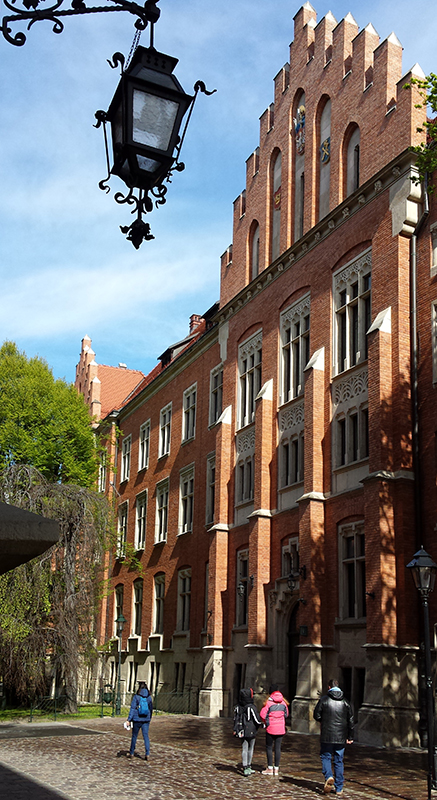
Collegium Witkowski, façade


Monument of Nicolaus Copernicus, student of Cracow Academy (today Jagiellonian University) in 1491-1495, in front of Collegium Witkowski. Lecture hall of Józef Tischner.
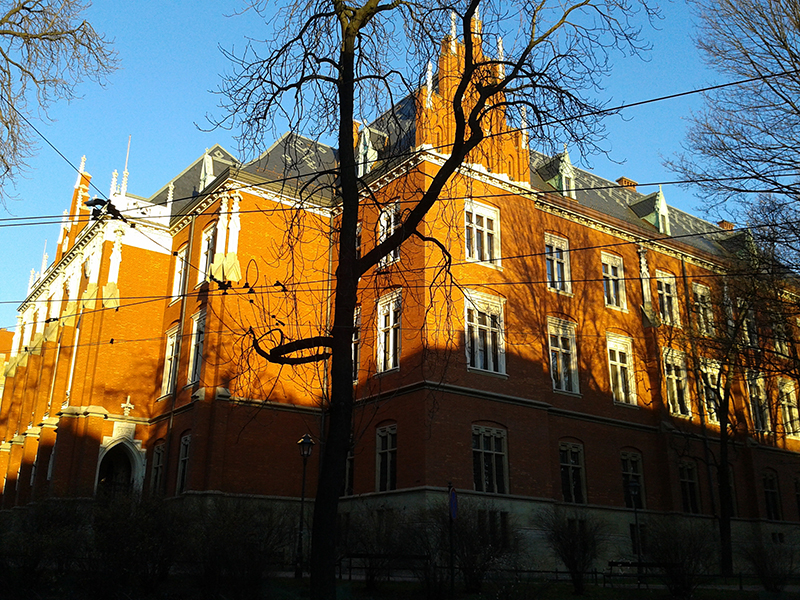
Collegium Novum. Main building of Jagiellonian University, 24 Gołębia Street, in front of Collegium Witkowski.
Sessions: Cracow University of Technology, Palace Łobzów
The lecture hall
and the poster exposition room of DyProSo2017 are located in the
former Royal Palace Łobzów, 1 Podchorążych Street (Cadet Street),
that houses nowadays two faculties of The Cracow University of
Technology: Faculty of Architecture, and Faculty of Physics,
Mathematics and Computer Science. The beginnings of the edifice go
back to the times of King Casimir the Great who built here, in
1357, a small castle, may be for his half-legendary mistress
Esterka (Esther). About hundred years later the chronicler Jan
Długosz noted: “(...) the Polish king Kazimierz (...) took as his
concubine a woman Esther of Jewish descent, because of her
extraordinary beauty. ... At the request of Esther, the royal
document also granted to all Jews living in the Kingdom of Poland
extraordinary privileges and freedoms.” Reportedly, the king had
casted up a mound after Esterka’s death. The mound still existed
in the fifties of the 20th century in the park surrounding the
palace. As a result of a reconstruction started by King Sigismund
the Old in 1522 and accomplished by King Stefan Batory in
1585-1587, a mannerist palace with arcades replaced the initial
gothic fortress. The palace became a frequent royal residence
under the reign of Sigismund III Vasa who, on the other hand, had
moved Poland’s capital to Warsaw. In the ground floor corridor we
will find Vasa’s coat of arms as well as a portrait of the King
Władysław IV Vasa born in this building. Restored after the
Swedish “deluge” (1655) the palace witnessed to the triumphal
return of King Jan III Sobieski from the victorious relief battle
of Vienna (1683). War trophies were also displayed here. Under the
Austrian rule in the partition times (1795 - 1918), the palace was
transformed into a Cadet Institute of Artillery (1852) with
substantial reconstructions lead by Feliks Księżarski, the
architect of the Collegium Novum of the Jagiellonian University.
Evoking remains of this military function of the building can be
seen in the main staircase. After World War II numerous former
Austrian caserns have been given to the newly organized school of
engineers, initially Polytechnic Faculties within the Academy of
Mining and then, since 1954, the independent Cracow University of
Technology. The staff of the new university included mainly Polish
researchers and teachers expatriated from the leading academic
centre Lwów (Ukr. Lviv). Prof. Tadeusz Malarski from the Lwów
Polytechnic founded the Chair of Physics. His successor, prof.
Michał Halaubrenner, an alumnus of the Jan Kazimierz University of
Lwów and teacher at the Casimir the Great High School in Lwów was
an author of numerous textbooks on physics for various grades of
education. The Chair, later transformed into the Institute of
Physics of the Cracow University of Technology, has found its seat
in the Palace Łobzów. Careful restoration works still aim at
preserving as many as possible historical details, e.g. the
ceiling in the lecture room W1. Now the surrounding park is
progressively regaining its splendor and the Esterka’s mound will
hopefully also come back to its place soon.

Bust of Marshal Józef Piłsudski (1867 – 1935) in front of former royal palace Łobzów

Main entrance

Lecture hall W1
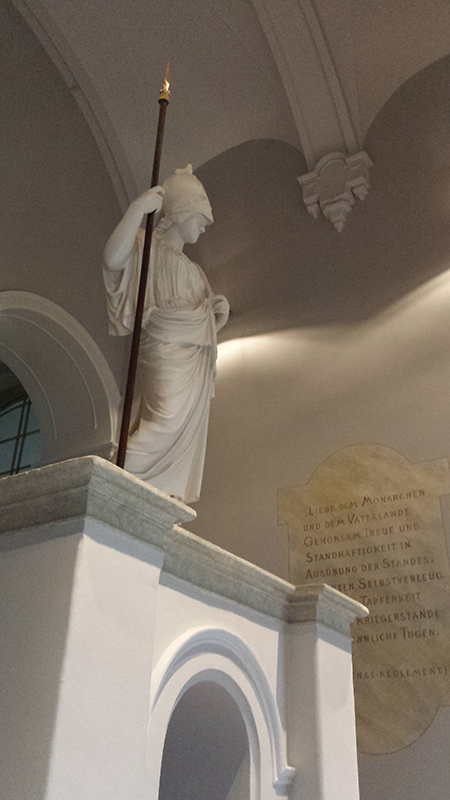

Main staircase
Solaris Synchrotron
SOLARIS is a brand
new “fourth generation” synchrotron radiation source located in
Kraków, Poland. The National Synchrotron Radiation Centre SOLARIS
was built between 2010 and 2015. The synchrotron itself was
launched in September 2015. Since then a team of over 40 people
has been working to make the infrastructure available for
scientists: to achieve optimum synchrotron parameters and to start
operation of two beamlines: the PEEM/XAS beamline for a
photoemission electron microscopy/X-ray absorption spectroscopy,
and the UARPES beamline for an ultra-angle resolved photoemission
spectroscopy. The commissioning of the beamlines started right
after the synchrotron had been launched. In June 2016 the UARPES
team did, for the first time, a typical experiment for which the
beamline had been designed – the massively parallel angle-resolved
photoelectron spectroscopy mode were tested. In the same time in
the SOLARIS storage ring more than 400 mA of beam current was
ramped to the final 1,5 GeV energy. In May 2017 first photons
reached PEEM/XAS beamline components. The end of beamlines
commissioning is planned for the beginning of the next year.
In 2016 and 2017 the SOLARIS Centre acquired funds for the
construction of two more beamlines: the PHELIX beamline for a
photoelectron spectroscopy and the XMCD beamline for a X-ray
magnetic circular dichroism.
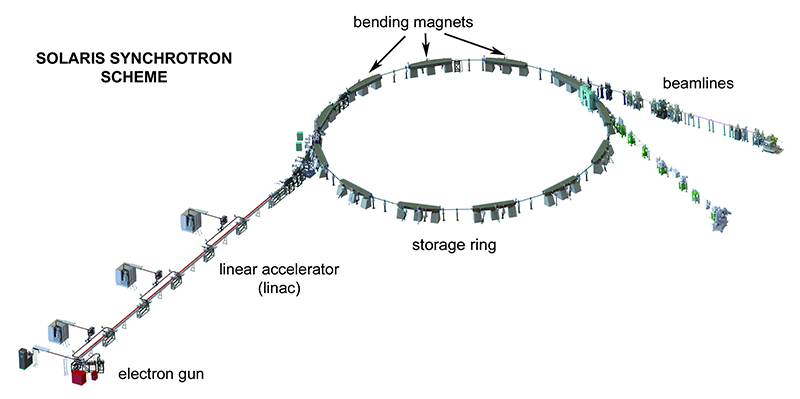

Conference dinner: District Kazimierz
The
conference dinner will take place in the restaurant Szara
Kazimierz, 39 Szeroka Street (Eng. Broad Street), located in the
district Kazimierz of Kraków. The quarter bears its name after the
king Casimir III the Great (Kazimierz III Wielki) who founded
here, on an isle on the Vistula River, a new town Casimiria in
1335 and fortified it soon after. The king, remembered as the one
who "found a Poland made of wood and left it made of stone",
founded in 1364 the first Polish university (Studium Generale,
today Jagiellonian University) with its first campus in Kazimierz.
The king also extended over his whole country the privileges
granted to Jews in 1264 in the Great Poland. The years of pest,
1347 – 1351, marked an intense influx of Jews who were elsewhere
blamed for the plagues and persecuted. The Jewish population of
Cracow was settled in a part of Kazimierz (Bawół – Bufallo) in
1495 by the king Jan I Olbracht. The town, oppidum iudaeorum,
became an important centre of Jewish culture in Poland. A famous
Rabbi Moses ben Israel Isserles, abbr. Remu, (ca. 1525, Kazimierz
– 1572, Kazimierz) wrote to one of his pupils: “Had not the Lord
left us this land as a refuge, the fate of Israel would have been
really unbearable." The building next to the restaurant Szara is
just the synagogue Remuh, built by Israel ben Josef, the father of
the Rabbi, in honour of his son in the years 1553 – 1557. The
Remu’s tombstone at the neighbouring Remuh Cemetery survived
miraculously the occupation of 1939-1945 and still attracts
pilgrims from all over the world. The Kazimierz’s oldest
synagogue, called Old Synagogue, started probably in 1407, is
situated at the end of the Szeroka Street. The town was formally
incorporated into the great Kraków at the end of the 18th century.
The walls of the Jewish part were demolished in 1822 and the
separating branch of the Vistula River was filled and transformed
into an important artery (Józef Dietl Street) in 1878 -1880.
However, the living conditions in Kazimierz degraded with time.
The life of Leopold Infeld (1898 – 1968), a son of a leather
merchant from Kazimierz and later a co-worker of A. Einstein, W.
Heisenberg and M. Born, is an example of difficulties in getting
out of the poverty and ethnic isolation. In March 1941 the German
Nazi expelled the Jewish population of Kazimierz to the ghetto
located in the district Podgórze on the other side of the Vistula
River. The ghetto was liquidated between June 1942 and March 1943.
Most of its inhabitants were sent to the concentration camps at
Bełżec, Oświęcim (Auschwitz) and Płaszów. The latter, also
situated in the district Podgórze, is particularly known from the
Oskar Schindler’s factory described in the novel “Schindler’s Ark”
by Thomas Keneally filmed by Steven Spielberg (1993). With the
advent of the transformations of 1989 the district of Kazimierz,
so far abandoned and neglected, has been systematically restored
in major part by Jewish organizations and private investors. A
growing Jewish Culture Festival is organized here every year http://www.jewishfestival.pl/en/jewish-culture-festival/.
Some streets in the quarter Kazimierz bear the names of heroes of
the Old Testament: Isaac, Jacob, Joseph, Ester. The Lewkowa Street
commemorates Lewko (? - 1395), a rich royal banker and tenant of
the salt mines. Dr. Jonatan Warszauer (1820 -1888) was a physician
who worked for the poorest inhabitants of Kraków and Kazimierz.
Rabbi Dow Ber Meisels (1798 –1870) and colonel Berek Joselewicz
(1764 – 1809) contributed to the Polish struggle for independence.
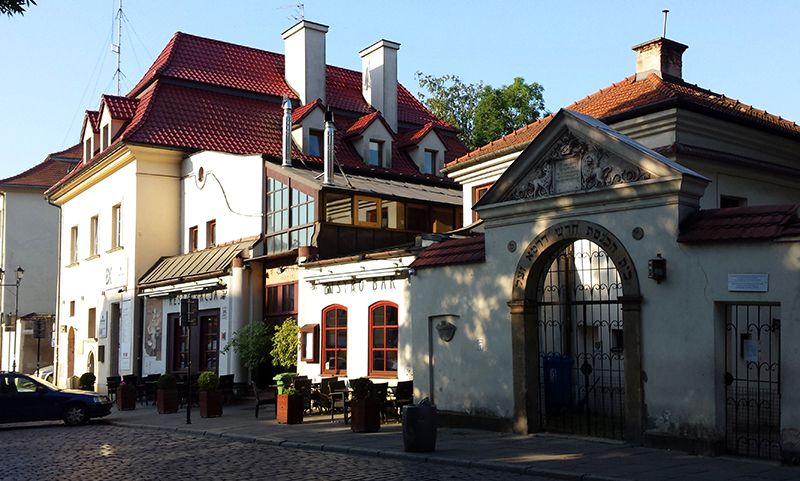
Restaurant Szara Kazimierz, 39 Szeroka Street, and entrance to the Remuh Synagogue
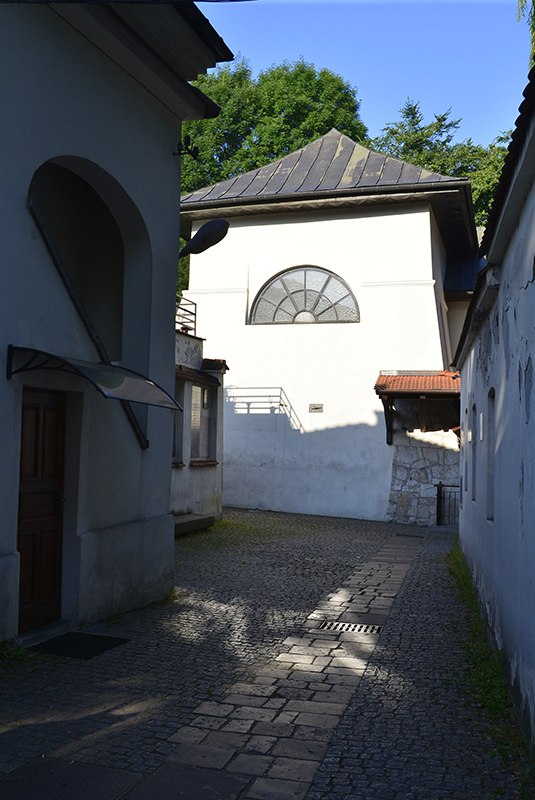
Courtyard of the Remuh Synagogue
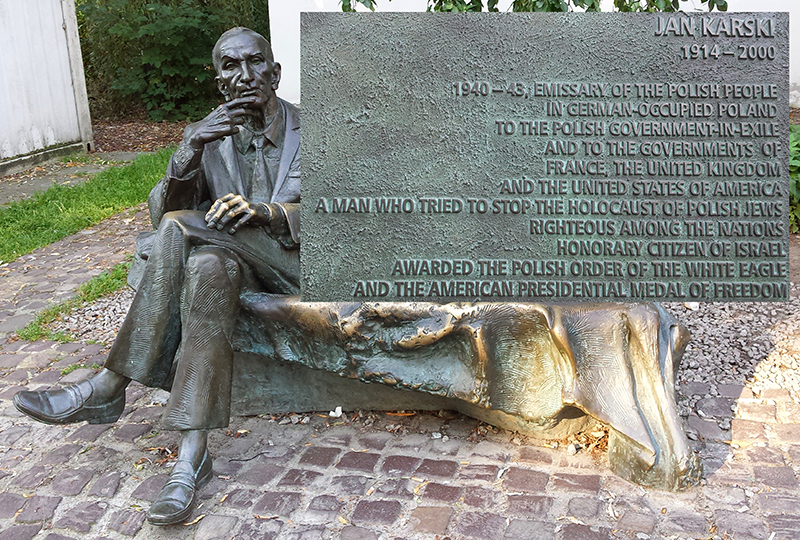
Jan Karski bench next to Remuh Synagogue
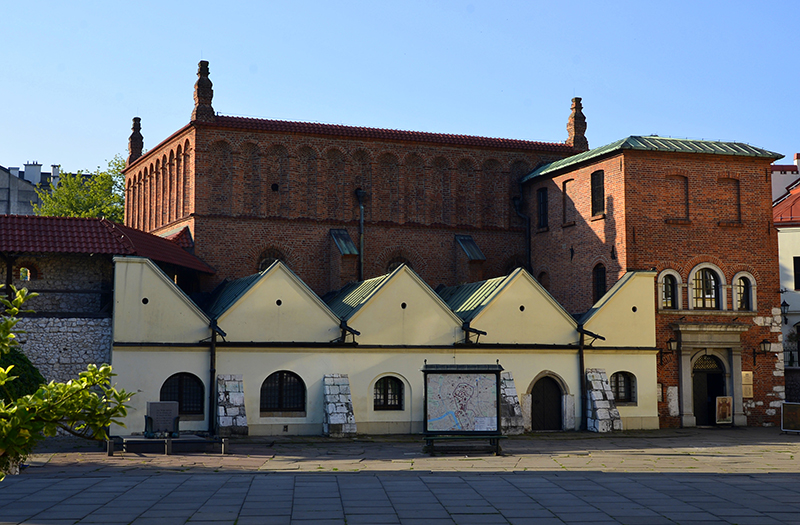
Old Synagogue

Plac Wolnica: main square of Kazimierz
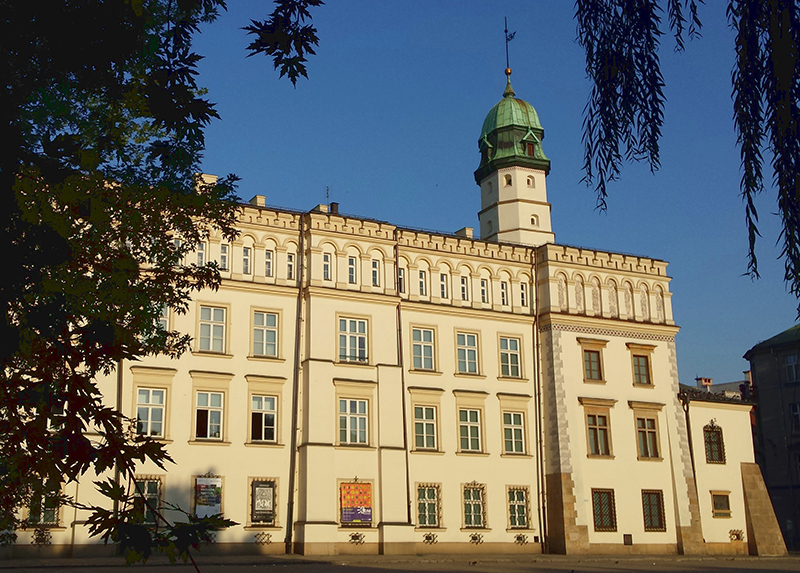
Renaissance town hall of Kazimierz at Plac Wolnica
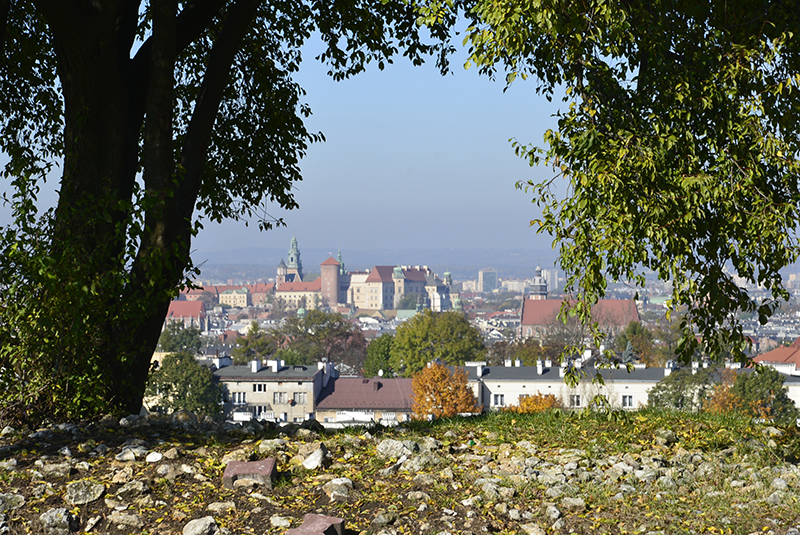
View on Royal Castle Wawel and quarter Kazimierz from district Podgórze
Main organizer: The Henryk Niewodniczański Institute of
Nuclear Physics Polish Academy of Sciences (IFJ PAN)
The
Institute conducts research in a wide range of subjects from
high-energy physics and nuclear reactions to condensed matter
studies and biological and environmental applications (www.ifj.edu.pl).
The 36th International Symposium on Dynamical Properties of Solids
is organized by the Department of Structural Research (www.ifj.edu.pl/dept/no3/nz31/Welcome.html?lang=pl).

Buildings of The Henryk Niewodniczański Institute of Nuclear Physics Polish Academy of Sciences, 152 Radzikowskiego Street
Opened in 2015 the Cyclotron Centre Bronowice (CCB) is active in applications of cyclotrons in scientific research and tumour radiotherapy (https://ccb.ifj.edu.pl/en.home.html).

Institute’s newest edifice: Cyclotron Centre Bronowice
Pedagogical University of Cracow (http://old.up.krakow.pl/main/eng.1.html)

Main building of the Pedagogical University of Cracow, 2 Podchorążych Street
Outside Old Town: District Nowa Huta

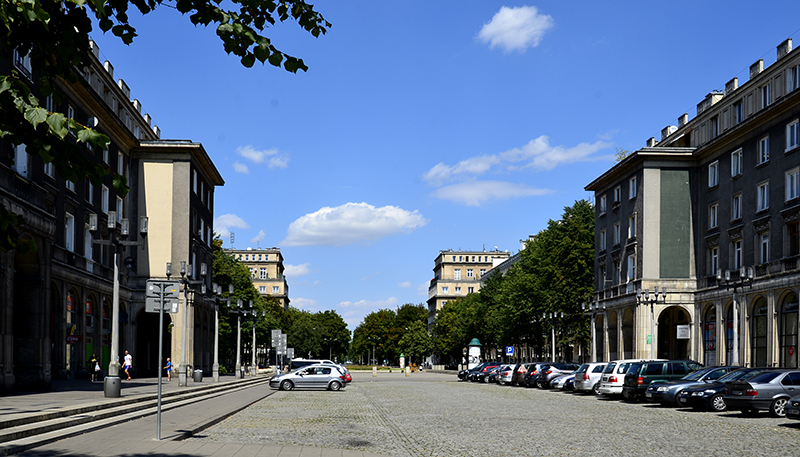
District Nowa Huta (New Ironworks, 1949 - 1956) was constructed around new steelworks. Its architecture draws ideas of baroque cities with a central square and radial avenues.
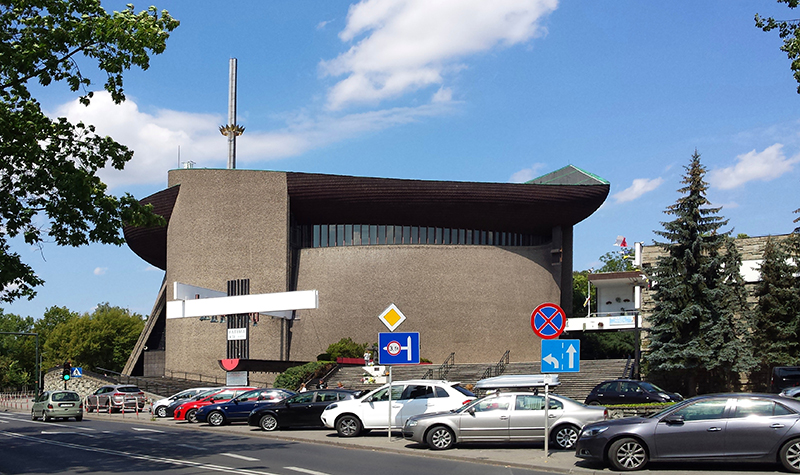
Church Ark of the Lord in Nowa Huta (1977)
District Podgórze
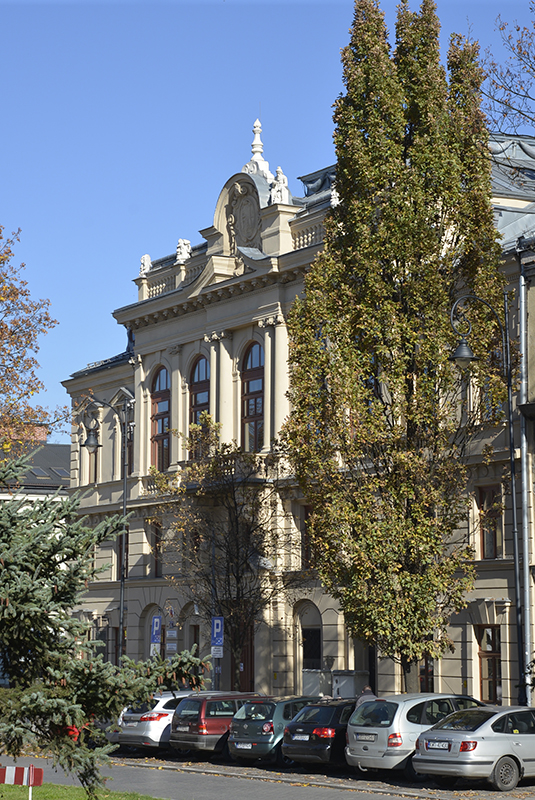
In 1784 the Austrian occupants created a new town Podgórze (temporarily Josefstadt) on the right bank of the Vistula River. The town was incorporated into Cracow in 1915. The photo shows the New Town Hall (1854).
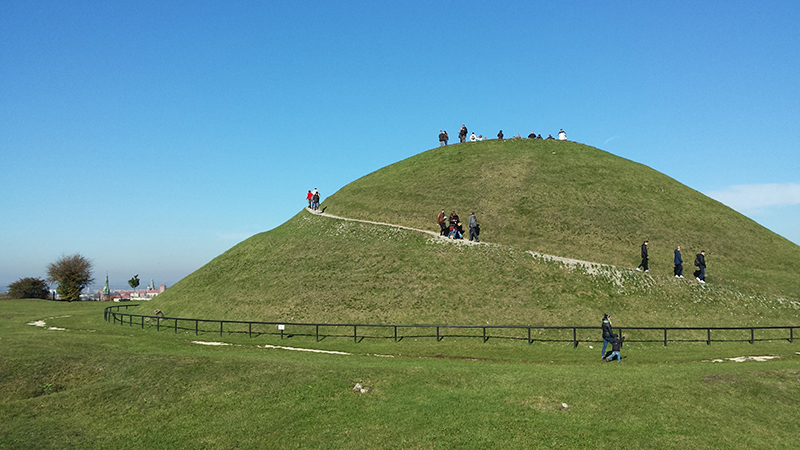
Krakus Mound (pre-slavic era?) in Podgórze Disrict commemorates Duke Krak a legendary founder of Kraków.
Inside Old Town of Cracow

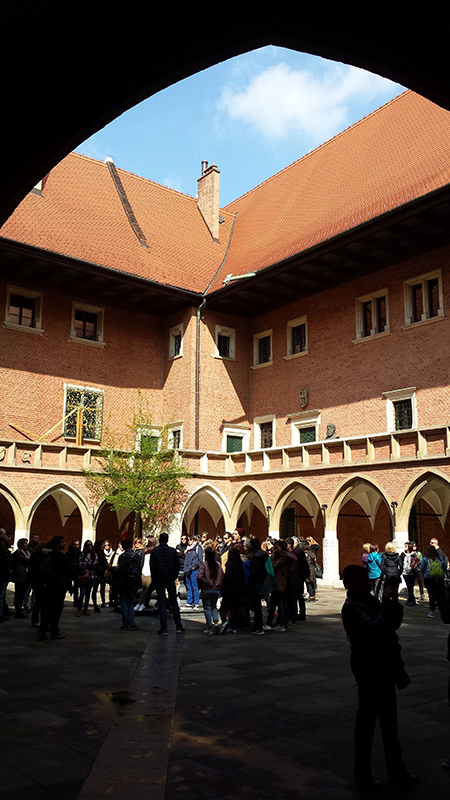
Collegium Maius (15th century), the oldest College and Museum of Jagiellonian University, 15 Jagiellońska Street
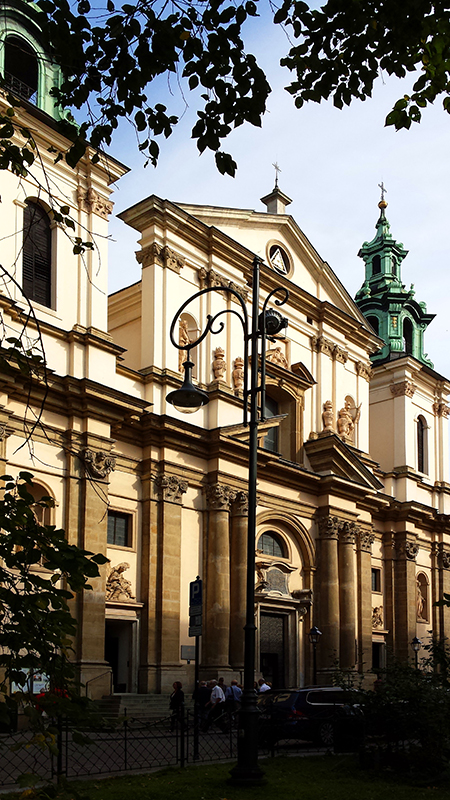
University’s St. Anne Church, 11 St. Anne Street
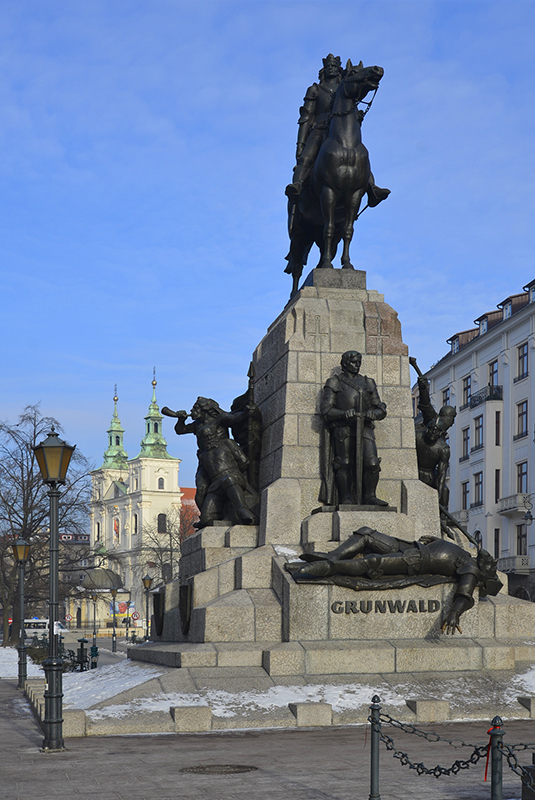
Monument founded by Ignacy Paderewski (1860 – 1941) in 500th anniversary of battle of Grunwald, Jan Matejko Square
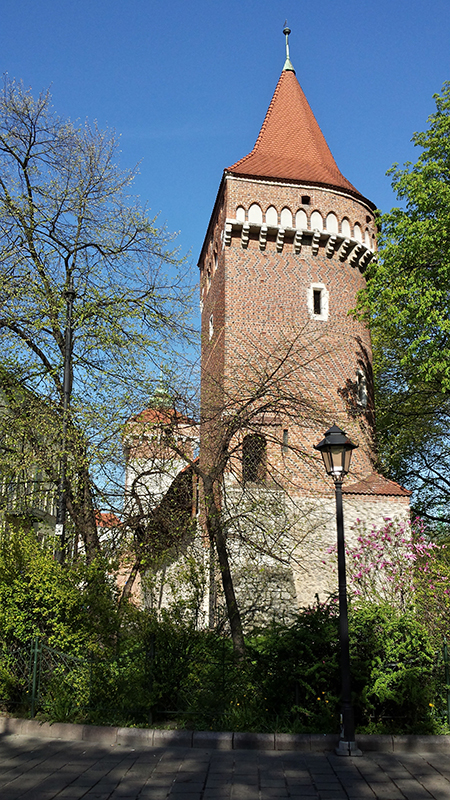
City war walls (14th -15th century) , Pijarska Street

St. Florian Gate, Pijarska Street

Juliusz Słowacki Theater (1893) and St. Cross Church (14th century) at Holy Spirit Square (Plac Świętego Ducha)

Old Theater (1781), Szczepański Square
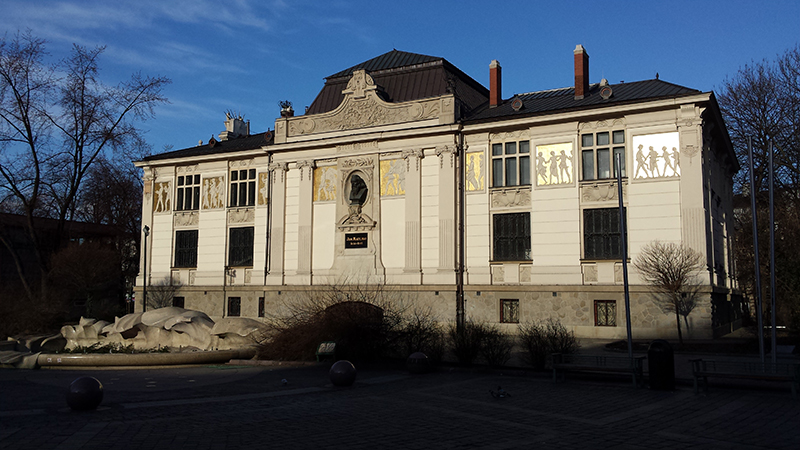
Fine Arts Palace (1901), 4 Szczepański Square

St. Mary Church (14th – 15th century) at Main Market Place shelters the largest Gothic altarpiece in the World (Veit Stoss, 1489). In foreground Adam Mickiewicz monument (1898).
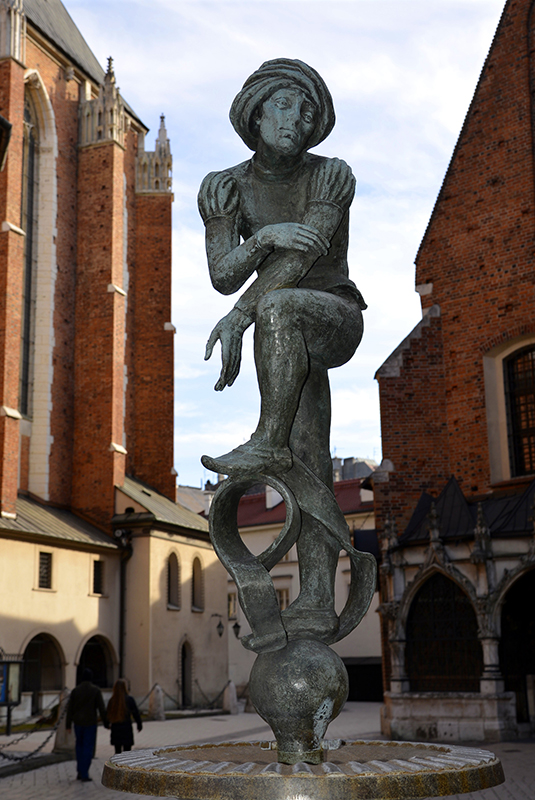
Statue of a scholar: augmented replica of a detail of Veit Stoss’s altar (1489), Mariacki Square

Town Hall Tour (14th century) and Cloth Hall at Main Market Place

Main Market Place, Cloth Hall (1392, 1559, 1879)

Main Market Place
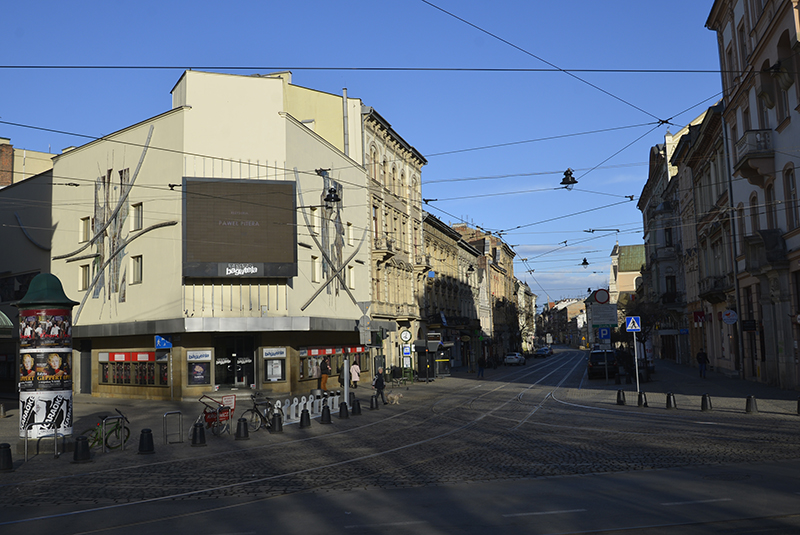
Bagatela Theatre (1919) and Carmelite Street leading to Łobzów and Bronowice.

Statue of president Józef Dietl by Ksawery Dunikowski (1936), All Saints Place

Archbishop Palace (15th – 19th century), 3 Franciszkańska Street
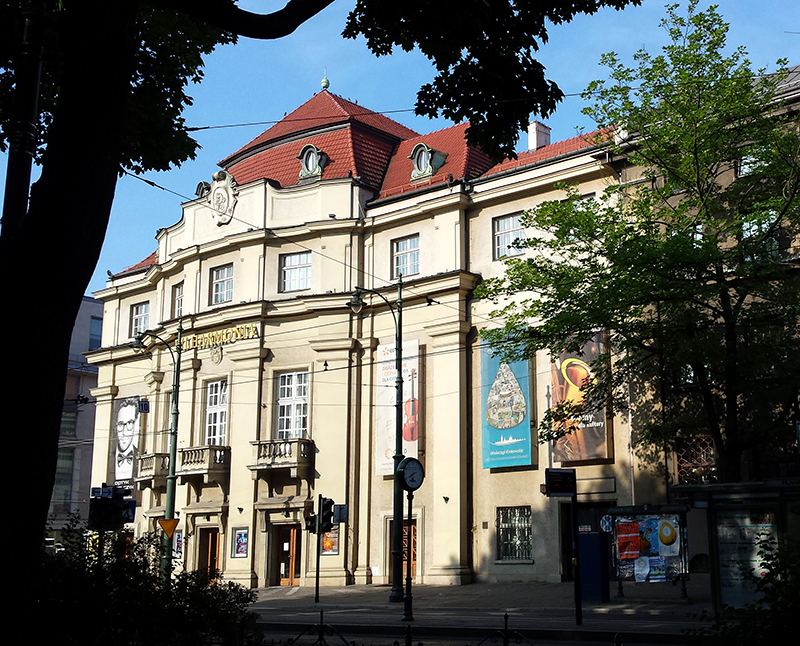
Concert Hall Filharmonia Krakowska (1931), 1 Zwierzyniecka Street

Zwierzyniec Norbertines Abbey (13th – 15th century), 88 Tadeusza Kościuszki Street
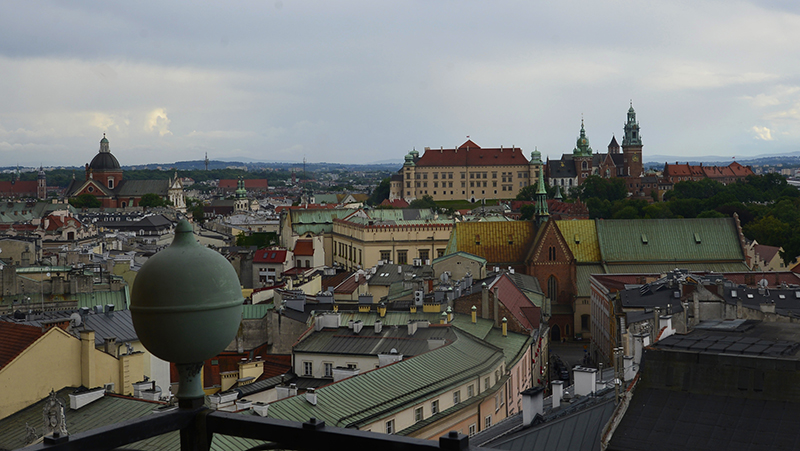
Roofs of Cracow

Garden of Archeological Museum, formerly St. Michel Prison, 3 Senacka Street
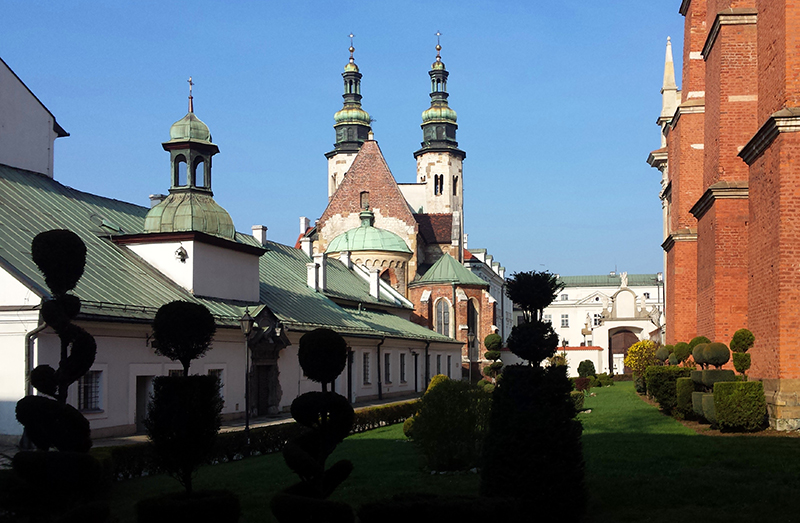
Mixture of architectural styles of St. Andrew Church, (1098, tented roofs 17th century), 56 Grodzka Street
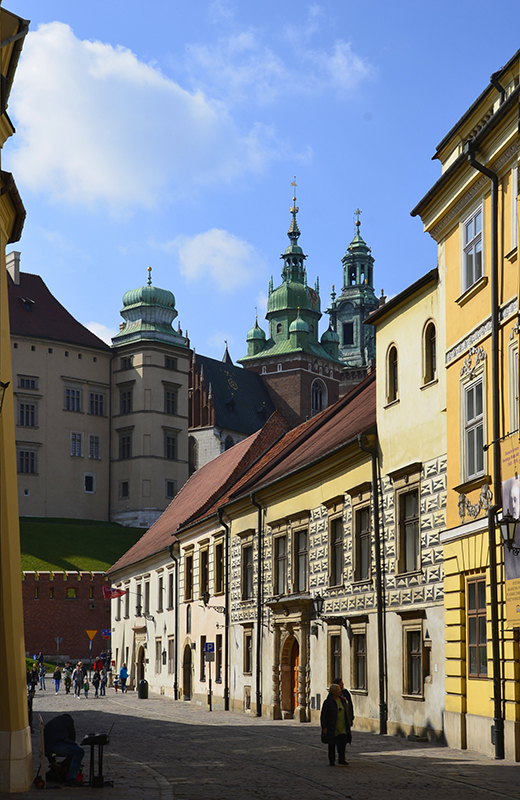
Kanonicza Street

House of Jan Długosz (1415 – 1450, Historian) at the foot of the Wawel Hill
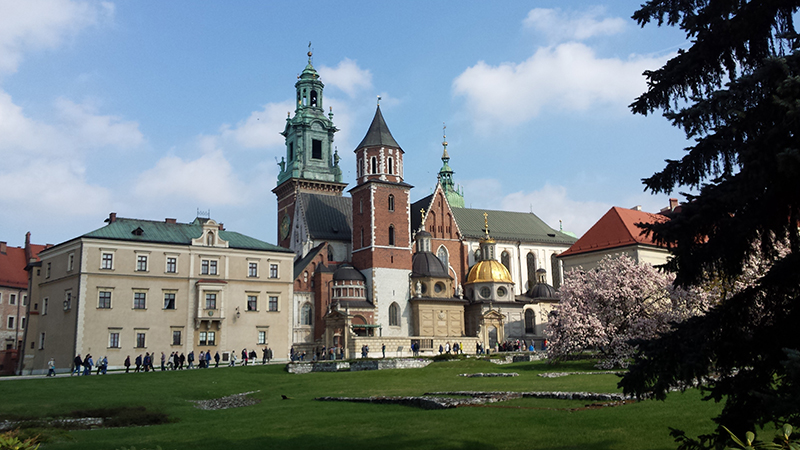
Wawel Cathedral (1142, 1364)
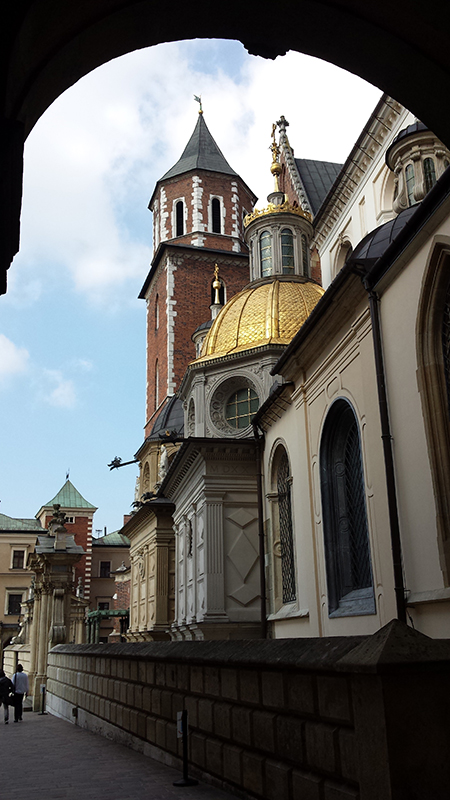
Golden roof of Sigismund Chapel (1533)
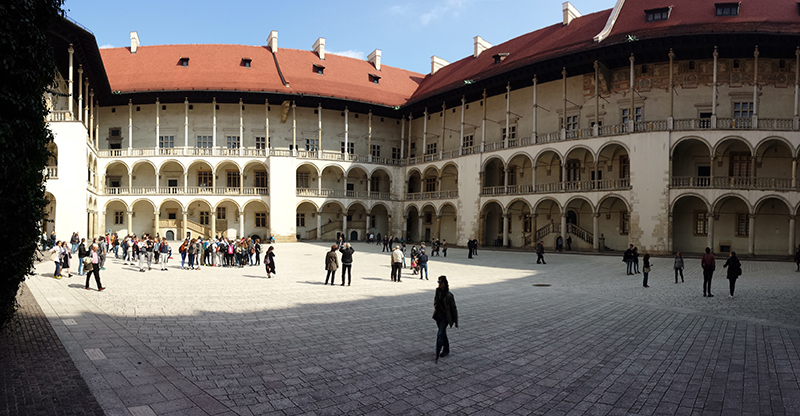
Arcade courtyard (1536) of Royal Palace Wawel
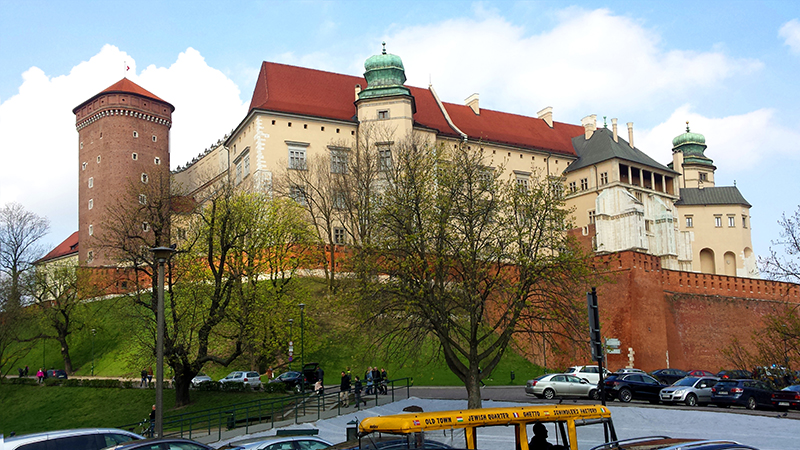
Fortifications and Royal Palace on the Wawel Hill
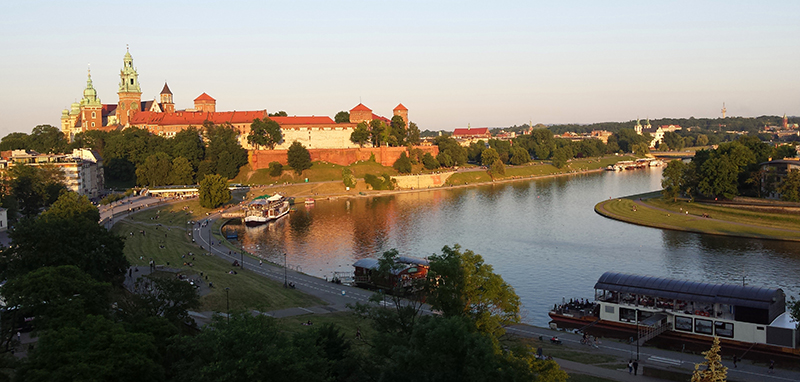
Wawel Castle, St. Catherine Church and Skałka Church on the Vistula River

